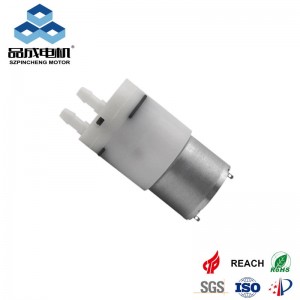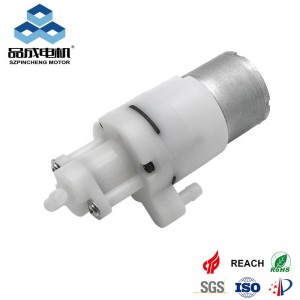The medical field demands unparalleled levels of precision, reliability, and safety. From diagnostic equipment to life-supporting devices, every component must perform flawlessly. Among these critical components, the miniature diaphragm pump has emerged as an unsung hero, enabling advancements in countless medical applications. But what makes these small pumps so uniquely suited for the high-stakes world of healthcare?
This article explores the key reasons behind the widespread use of miniature diaphragm pumps in medicine and their impact on patient care.
1. Unmatched Precision and Controllable Flow Rates
Many medical procedures, such as drug delivery, sampling, and analysis, require extremely accurate and consistent fluid or air handling. A slight variation in flow rate can compromise a diagnostic test or a therapeutic treatment.
-
How they deliver: Miniature diaphragm pumps offer exceptional control over flow rates and pressure. Their pumping action can be finely tuned via motor speed, allowing for precise metering of minute volumes of liquids or gases. This is indispensable in devices like:
-
Portable Infusion Pumps: Delivering medications, insulin, or analgesics at a precisely controlled rate.
-
Analytical and Diagnostic Equipment: Moving samples and reagents in lab-on-a-chip devices and point-of-care testing systems.
-
2. Superior Contamination Prevention and Fluid Isolation
In medical settings, preventing cross-contamination is non-negotiable. The pump must ensure that the medium being pumped (whether air or fluid) never comes into contact with the pump's internal mechanics or the external environment.
-
How they deliver: The core design of a diaphragm pump creates a hermetic seal between the pumping chamber and the drive mechanism. The medium only contacts the diaphragm and the valve materials, which can be manufactured from medically compliant, inert, and easy-to-sterilize materials like PTFE or specialty elastomers. This makes them perfect for:
-
Nebulizers: Pumping air to aerosolize medication without risk of oil or particle contamination from the pump.
-
Cell Sampling and Handling: Safely moving sensitive biological fluids without introducing contaminants or damaging cells.
-
3. Exceptional Reliability and Low Maintenance
Medical devices, especially those used in home care or implantable scenarios, must operate for extended periods with minimal maintenance. Downtime is not an option.
-
How they deliver: With only a few moving parts (primarily the diaphragm and valves), these pumps are less prone to failure than pumps with complex gears and pistons. They are designed for long life, dry-running capability (in many cases), and consistent performance, which is crucial for:
-
Ventilators and Respiratory Devices: Providing a continuous, reliable source of air pressure.
-
Wearable Medical Devices: Operating quietly and efficiently for long durations on battery power.
-
4. Compact Size and Lightweight Design
The trend in healthcare is toward portability and miniaturization—from powerful handheld diagnostic tools to wearable drug delivery systems.
-
How they deliver: As the name suggests, miniature diaphragm pumps are incredibly compact and lightweight. This allows engineers to integrate them into portable devices without sacrificing performance, enabling breakthroughs in:
-
Portable Medical Devices: Creating lightweight, battery-operated devices for monitoring and treatment outside clinical settings.
-
Lab Automation: Being integrated into robotic analyzers where space is at a premium.
-
5. Quiet and Vibration-Free Operation
Patient comfort and the quiet operation of clinical equipment are significant considerations, especially in settings like hospitals and home care.
-
How they deliver: Advanced design and materials dampen noise and vibration in modern miniature diaphragm pumps. This silent operation is essential for:
-
Patient Comfort: Ensuring devices like sleep apnea therapy machines (CPAP) do not disturb the user's sleep.
-
Diagnostic Accuracy: Preventing vibration from interfering with sensitive measurements in lab equipment.
-
Key Medical Applications of Miniature Diaphragm Pumps
-
Diagnostic & Analytical Equipment: Gene sequencers, blood analyzers, and chromatography systems.
-
Therapeutic Devices: Insulin pumps, wound therapy pumps, and pneumatic compression devices.
-
Respiratory Care: Ventilators, CPAP/BiPAP machines, and oxygen concentrators.
-
Drug Delivery: Nebulizers, infusion pumps, and anesthetic dispensers.
-
General Medical Devices: Dental equipment, surgical tools, and aspiration pumps.
Conclusion
The miniature diaphragm pump is far more than just a simple component; it is a critical enabling technology that meets the stringent demands of the medical industry. Its unique combination of precision, safety, reliability, and compact design makes it the preferred choice for engineers developing the next generation of life-saving and life-enhancing medical devices. As medical technology continues to evolve toward greater miniaturization and point-of-care applications, the role of these versatile pumps will only become more vital.
you like also all
Read More News
Post time: Sep-15-2025




